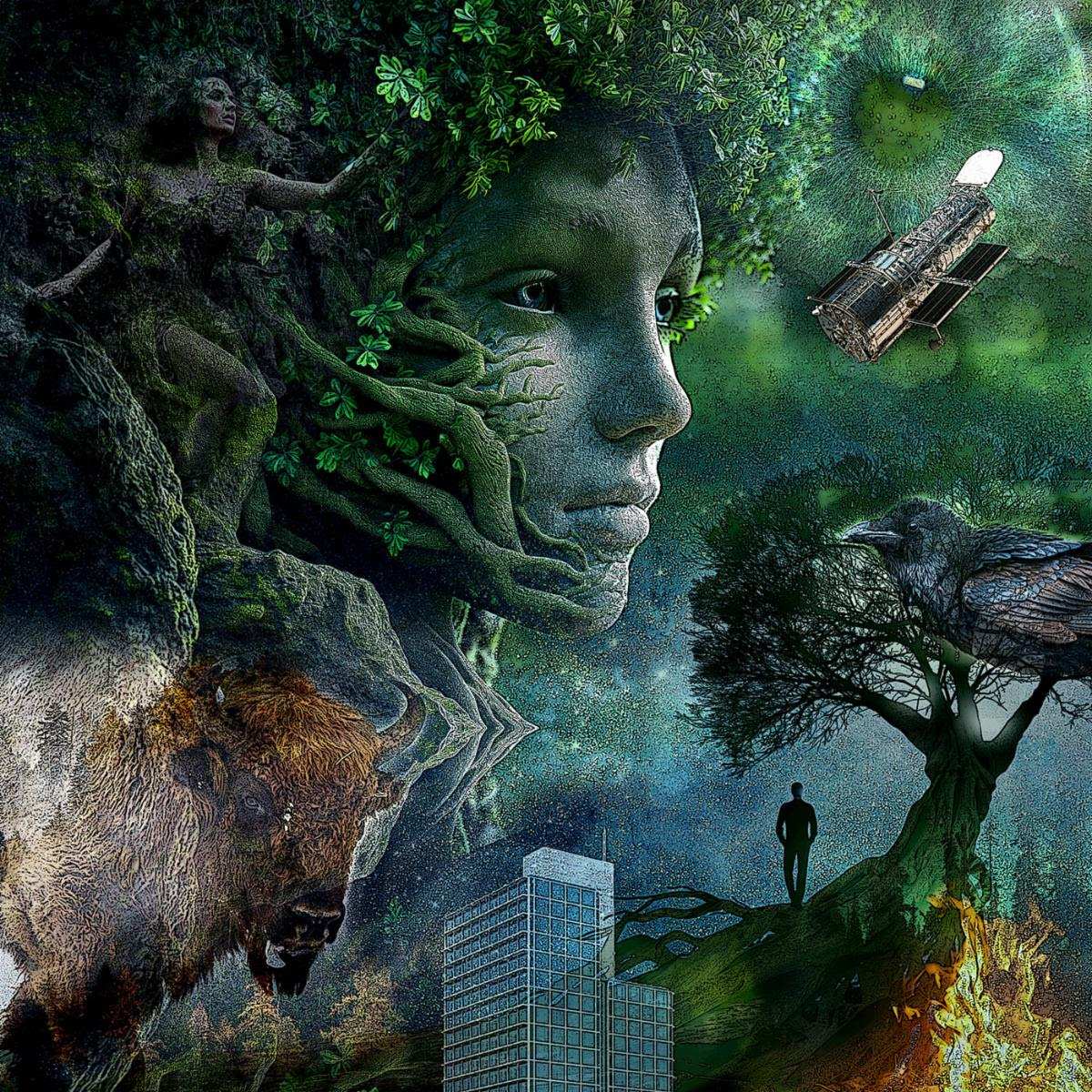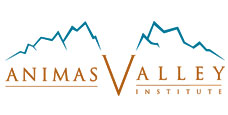Soulcraft Musings
Today, January 20, 2017, we inaugurate Soulcraft Musings, a new offering from Animas Valley Institute (see below). This is the same day America inaugurates a new president, a cultural upheaval currently mobilizing thousands of response teams worldwide. On this day we commence our humble project of Soulcraft Musings in support of the deepening, diversification, and flourishing of all life. At this time in the world, may we all inaugurate actions and projects that collectively give birth to a life-enhancing society.

Thomas Berry and the Evocation of Participatory Consciousness, Part IV
by Geneen Marie Haugen
Friday, July 26, 2024
This is the fourth part of a multi-part Musing (one per week).
The two primary stories that have guided Western people — the Biblical and scientific accounts of creation and of evolution — are lacking sufficient complexity and nuance to guide our way into what Thomas calls the Ecozoic Age. Neither story suggests the participation of human beings in the outcome of the story, as if we live in a universe where everything happens to us. Thomas notes that a profound reorientation has emerged. He writes:
A decisive transformation has taken place. The human had nothing to say in the emergent period of the universe before the present. In the future, however, the human will be involved in almost everything that happens.[13]
The human species already is involved in altering the biosphere, whether or not we allow awareness of our actions. Much of the human community, it would seem, unconsciously participates in the unraveling of life systems by “improving” our own position of comfort in the world to the detriment of even our own kind, as well as the other-than-human communities. We helplessly follow the life-brutalizing directives of our invented economic systems,
Unable or unwilling to recognize…that our entire modern world is…inspired by a distorted dream experience, perhaps by the most powerful dream that has ever taken possession of the human imagination. Our sense of progress, our entire technological society…is a pure dream vision in its origin and in its objectives [14].
Thomas traces the human-caused harm to our glorious world to its origin in a distorted — and unexamined — dream, its origin in a trans-material dimension of the human experience. Thus, he suggests an intrinsic intertwining of trans-material and physical realities:
There is, I propose, an unbroken continuity in the creative process through this expanse of universe development. Both in our physical and in our psychic constitution, we are totally involved in that single vast creative process that reaches across all the distances of space and from the beginning of time to the present[15].
Even psyche is “totally involved” in the unfolding story. Human dreams, even distorted dreams, are participatory in the story of Earth.
Our distorted dream experience, our technological rapture, our unexamined faith in “progress” have brought us to the perilous edge, but it is also true that our technologies and faith in progress have given us the very tools to tune in to the cosmic unfolding. Would we know what we know of the universe story without our sophisticated instruments that look backward in time or into the beings we call cells and atoms, or without our certainty that we are entitled to expand our knowledge and our presence in the galaxy? Yet our dream of technological and scientific progress has missed attending, or finding coherence with, the mystery that interpenetrates phenomena. Thomas writes, “The new origin story, the supreme achievement of the scientific effort of these centuries, must be completed by a sense of the psychic, as well as the physical, dimensions of the evolutionary process from the beginning”[16]. Until only recently, we have probed the physical universe as if it is devoid of psyche, as if the imagination and curiosity of human beings do not reflect imagination and curiosity inherent in the cosmos.
If psyche or consciousness interpenetrates the phenomenal universe, who can say with certainty that our sophisticated instruments and observations were the only way we could have encountered the story of cosmic evolution? Although Thomas wrote of the importance of entering the dream or shamanic realms to find guiding vision, it seems that he did not explore the possibility that the carbon atoms with capacity to “enter the processes of thinking”[17] might themselves be communicating with us, telling us the story of their own long journey, just beyond the reach of our ordinary perceptions.
Western minds chose to attempt to penetrate matter, but earlier and contemporary indigenous people have chosen to enter other dimensions of reality through the doorways of consciousness itself, assisted by plants — our distant kin and teachers — or by vision-evoking methods such as fasting, dancing, or wilderness solo. The ancestral totem poles of the American Northwestern people suggest the lineage of non-human Others from whom a tribe descended; other tribes of this continent commonly refer to Earth, Sun or Moon as Grandmother or Grandfather. Australian Aborigines listen for ancestor spirits in the dreaming of Earth. The recognition of reciprocity with the other-than-human community and lineage of ancestors is deeply embedded in at least some traditional peoples — a participatory relationship that yet eludes most Westerners despite our intellectual knowledge of ecological kinship. The question is not only how did people without silicon-based technology know, but how did they know so deeply — in a way that infused their very manner of being, in a consciousness of participation with ancestors and kin, in an ensouled and animate world?
We Westerners have benefited greatly from science — who does not tremble at the sublimely surreal photographs from the Hubble? — but what depths of experience and ways of knowing have we lost by exploring matter devoid of psyche, by severing the body from the dream?
This essay was published in Thomas Berry: Dreamer of the Earth (Laszlo and Combs, editors), Inner Traditions, 2011.
References
[13] Mary Evelyn Tucker, in Thomas Berry’s Evening Thoughts: Reflecting on Earth as Sacred Community. Mary Evelyn Tucker, ed. (San Francisco: Sierra, 2006), p. 21.
[14] Thomas Berry, The Dream of the Earth (San Francisco: Sierra, 1988), p. 205.
[15] Evening Thoughts, pp. 59-60.
[16] Ibid., p. 69
[17] Ibid., p. 55
To read previous musings click here.

